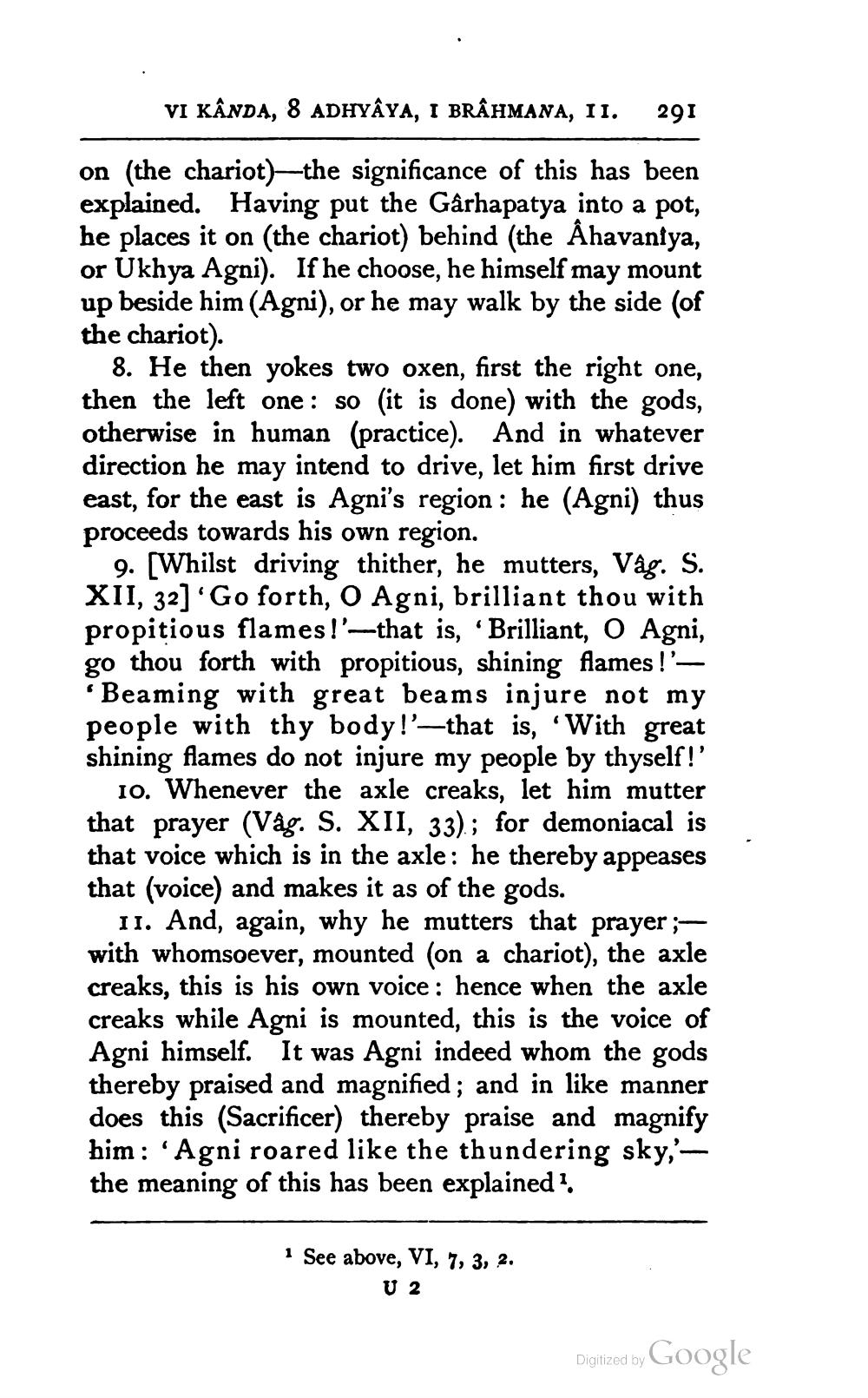________________
VI KANDA, 8 ADHYAYA, I BRÂHMANA, 11.
291
on the chariot)—the significance of this has been explained. Having put the Gârhapatya into a pot, he places it on (the chariot) behind (the Åhavaniya, or Ukhya Agni). If he choose, he himself may mount up beside him (Agni), or he may walk by the side (of the chariot).
8. He then yokes two oxen, first the right one, then the left one: so (it is done) with the gods, otherwise in human (practice). And in whatever direction he may intend to drive, let him first drive east, for the east is Agni's region : he (Agni) thus proceeds towards his own region.
9. [Whilst driving thither, he mutters, Vag. S. XII, 32] Go forth, O Agni, brilliant thou with propitious flames!'--that is, Brilliant, О Agni, go thou forth with propitious, shining flames !'* Beaming with great beams injure not my people with thy body!'—that is, “With great shining flames do not injure my people by thyself!'
10. Whenever the axle creaks, let him mutter that prayer (Våg. S. XII, 33); for demoniacal is that voice which is in the axle: he thereby appeases that (voice) and makes it as of the gods.
11. And, again, why he mutters that prayer ;with whomsoever, mounted (on a chariot), the axle creaks, this is his own voice: hence when the axle creaks while Agni is mounted, this is the voice of Agni himself. It was Agni indeed whom the gods thereby praised and magnified; and in like manner does this (Sacrificer) thereby praise and magnify him: 'Agni roared like the thundering sky,' — the meaning of this has been explained.
* See above, VI, 7, 3, 2.
U 2
Digitized by Google




